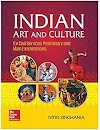Social Influence: Persuasion
- Concept of persuasion
- Aristotle's Perspective
- Ethos (Credibility of the source)
- Pathos (Emotional appeal)
- Logos (Logical argument)
- Elements of Persuasion
- 'Who' said, 'What' to 'Whom' by 'What means'.
- 4 Steps in persuasion (ACRA Model)
- Attention
- Comprehension
- Retention
- Action
- Characteristics of the Source
- Characteristics of the Receiver
- Characteristics of the Message
- Cognitive dissonance
- Self Persuasion
Persuasion - It is a process which is aimed at changing a person or a group's attitude and behaviour towards some events, idea, object or the other person.
'Aristotle' is known as 'The Father of Persuasion'.
Aristotle's Perspective
According to the Aristotle, there are three modes which can bring about the persuasion.
- Ethos ⟶ Credibility
- Logos ⟶ Logical argument
- Pathos ⟶ Emotional appeal
Ethos - Ethos is an appeal to ethics and it is a means of convincing someone of the character, authority or credibility of the persuader.
It can be done in multiple way. Some of them are as follows:
- By bringing a notable figure in the field in question such as scientists, professors, researchers, company executives, doctors, etc.
- By demonstrating mastery over the specialised vocabulary of the field.
- By being introduced by some other established authority.
Logos - Logos is a logical appeal and to use logos, one need to side facts and statistics in the field of questions.
Having a logos appeal also enhances Ethos because information makes the speaker looks knowledgeable and prepared the audience for persuasion.
Logos can be developed by citing facts, constructing logical arguments, using historical analogies, etc.
Pathos - It is an appeal to emotion and is a way of convincing an audience of an argument by creating an emotional response.
It is important to see the emotional side of the issue, if one is trying to persuade someone. It is used to invoke sympathy from an audience.
Pathos can be developed -
- by using meaning language.
- by emotional tone.
- by emotional evoking examples.
The most important aspect of using Pathos is emotional intelligence of the speaker, i.e., speaker has the ability to invoke sympathy in others.
Question for practice
- According to Aristotle, for persuasion not only Ethos and Logos but also Pathos is equally important. Comment.
- How would you use persuasion for effective (successful) implementation of Swachh Bharat Mission?
- Look for Ethos ⟶ any charismatic personality (who have credibility)
- Logos ⟶ give logical argument
- and then Pathos ⟶ Emotional appeal
Elements of Persuasion - There are 4 elements in the process of persuasion.
- Source - 'Who' said
- Message - 'What' said
- Receiver - said to 'Whom'
- Channel - said by 'What means'
4 Steps in Persuasion
- Attention - Message have to be made interesting and invoke curiosity, which attracted the attention of the audience.
- Comprehension - Message has to be comprehended, i.e., language and the context need to be understood.
- Retention - Time and again message need to be keep delivering so as to be retained.
- Action - Make action in intended direction.
Attention - For the source to catch the attention of the target group, the message presented should be interesting, have some utility, distinctiveness and should generate curiosity in the receiver.
Comprehension - It refers to the ability of the source to make the target group understand the message which is not possible when it is designed taking into cognizance the target group frame of the reference (i.e., उन्ही के जुबान में समझाना).
Retention - The target group should be able to retain and retrieve the message presented. For this, the message should be presented repeatedly and the salient points needs to be highlighted.
Action - Persuasion is said to be successful if the target group not only just receives the message but also acts upon it in a manner intended from the source.
Characteristics of the Source
- Credibility (Expertise and Trustworthiness)
- Attractiveness (Physical, Communication skills & Ideological compatibility)
- Power
Credibility - Credibility means the extend or the degree to which the target group believes in the position which is advocated by the source.
To access the Credibility -
- Expertise - It is judge by whether or not source is informed about the topic under discussion or not.
- Trustworthiness - Truthfulness or the source is judge by whether they have some vested interest or not. Lesser the vested interest, the more are the chances of successful persuasion. Trustworthiness can be achieved by -
- Walking the talk
- Integrity
- Consistency in behaviour
- High trustworthiness and expertise go hand in hand. However when there is a conflict, it is the trustworthiness which gets the upperhand.
Sleeper Effect
- Degree of acceptance (for High Credibility Source) is low, if the source did not re-enforce his credibility.
- Whereas Degree of acceptance (for Low Credibility Source) is high, if the source works by walking the talks.
- But under any given circumstance, the persuasion level of Low Credibility Source can never match with that of High Credibility Source. The gap will always remain.
Sometimes, a source with low credibility is more successful in bringing about the desired change than a person with high credibility, if he argues against his fundamental interests.
Over the time, the influence of credible source somewhat declines and for the same message issued by Low Credibility Source, the receptivity improves. Hence, the credibility needs to be periodically enforced (by good works, social media campaigns, advertisements, walking the talk, development at grass root level, ability to ensure peace, stability, order, etc.).
Attractiveness - An attractive source is perceived as more likeable and therefore target members are more receptive.
Power - It is the potential to influence the behaviour of the target group in the intended direction.
Greater the power of the source, more would be successful persuasion.
Characteristics of Credibility, Attractiveness and Power
And only Attractiveness is not long lasting.
Therefore from the above chart, it is clear that,
- Credibility (which result into conformity) >> Attractiveness >> Power (which results into compliance)
Characteristics of Message - Message must have the following characteristics for good persuasion.
- Message discrepancy
- Fear appeal
- Sidedness of message
- Drawing conclusion
- Emotional and Factual appeal
- Pleasant form of distraction
Message Discrepancy -
Zone of Acceptance, Zone of Indifference and Zone of Rejection of a message
Role of Facilitator, Resistor and Fence Sitter in persuasion
- Facilitator ⟶ Increases the Zone of Acceptance
- Resistor ⟶ Increases the Zone of Rejection
- Fence sitter ⟶ Increases the Zone of Indifference (Indecisive)
Characteristics of a Good Facilitator -
- Educated
- Have empathy and are compassionate
- A good listener
- Flexible
For a message to be accepted, it has to be fall in the zone of acceptance.
If the message falls in the Zone of acceptance, Discrepancy decreases and the acceptance increases. Whereas if the message falls in the zone of rejection, the possibility of rejection of the message is very high.
So, we have to look for the people who have wider Zone of Acceptance.
And the Zone of Acceptance can be further increased by -
- Ensuring source to have credibility, attractiveness and power (CAP).
- Present the message in culturally congruent manner.
- Ensure utility and the interest in the message.
- Encourage participation of the target group.
Fear Appeal -
- Mild fear appeals generally works better than strong fear appeals.
- Strong fear appeals produce defensive avoidance where in the target group tries to insulate itself from the message issued by the source.
- Fear appeal generally happens to be effective if it provides specific recommendation about how change in attitude or behaviour would prevent the negative consequences.
- Very strong fear appeal is successful only if the source has very high credibility else it will be viewed as propaganda.
For example - (Case of Covid Vaccination)
- Strong fear appeal - If you didn't get vaccinated, you will die.
- Mild fear appeal - If you didn't get vaccinated, you might get infected with Covid.
- Effective persuasion - By providing Application and Websites to register and get vaccinated easily.
Drawing Conclusions -
- Successful communication is one where there is minimum discrepancy between the intended and the perceived message.
- Hence, we intend to draw conclusion to avoid any discrepancy. But this is only useful if the information is unstructured, i.e.,
- Audience is not very intelligent or educated.
- Message is not related to the core values of the receiver and there is not mistrust or hostility between the source and the receiver.
Sideness of the Message -
- One sided communication is successful if the target group is -
- Uninformed about the other side.
- Uneducated.
- If they already agree with that side of the message.
Emotional and Factual appeals
The best result are obtained, if the persuasive message has both the appeals, factual as well as emotional (i.e., both Logos and Ethos).
- Emotional + Factual appeal >> Only emotional appeal >> Only Factual appeal
Pleasant form of distraction
To increase the effectiveness of the persuasive appeal, there should be pleasant form of distraction.
For example - Food, Humors, etc.
Characteristics of the Receiver
- Selective exposure, attention + Interpretation
- Personal traits ⟶ Self efficacy and Internal locus of control
- Intelligence
The target group members don't intentionally avoid information but because of the culture in which they live, they get exposed only to that information which happens to support their existing view. For example - Role of Patriarchy in middle class with respect to the working women.
It is followed by the possibility of selective attention and interpretation which can be addressed by making message appears interesting and useful by providing contextual clarity and illustration.
People with the following traits are difficult to convince to begin with. However, when presented adequate facts and statistics, they can be convinced. They tend to stay with you and not swayed away by the subsequent propaganda.
Question for practice
Upper class people had stop sending their kids to the school because a dalit cook is preparing the mid-day meal. How will you convince them?
Hints -
- First look for facilitators
- Further increase their zone of acceptance by various methods
- Give logical reasons (i.e., Logos)
- Making people understand the value of education - you send your kids to the government schools because you can't afford private school and you stopped sending your kids to school only because you think you have upper status but now the lower caste people's child is getting educated and your kids are sitting home and not getting education. So, their probability of getting a good job is very less.
- Making them understand the nutritional benefits of Mid-day meal which your child is going to lose.
- Making them understand that you are compromising the cognitive development of your child.
- Also it will be more effective, if you teach them about the ill effects of caste system.
- Also make sure that no social boycott will take place by providing them protection.
- Other ways -
- Introduced charismatic personalities
- Setting successful example
- Organising community feast and plays
- Emotional appeals (Ethos) can also be used by giving mythological and real life examples. Such as -
- Mythological - Lord Rama eating berries from Saburi and Lord Rama having a friend from lower caste.
- Real life - IAS Avinish Kumar sent her child to Government School.
- So, slowly and gradually, the mindset with respect to caste system comes to an end.
Previous Article - Social Influence
Next Article -
Notes on other subjects
Optional Subject
Note - This is my Vision IAS Notes (Vision IAS Class Notes) and Ashutosh Pandey Sir's Public Administration Class notes. I've also added some of the information on my own.
Hope! It will help you to achieve your dream of getting selected in Civil Services Examination 👍




.png)




0 Comments